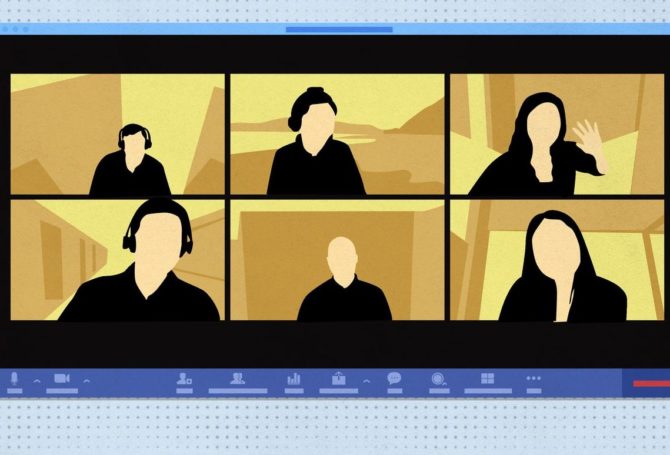
One of the newest Progressive Insurance TV commercials features a botched video chat. Most of us can relate.
Video chats have become the new norm for millions of house-bound Americans who are trying to keep working and experience some semblance of social engagement. When it works, it can be amazing with a screenful of faces. When it doesn’t, you can feel even more isolated.
Problems are not always the fault of the technology. I missed our firm’s first video staff meeting because I was unable to log on to Microsoft Teams. I forgot my Outlook password and discovered after repeated attempts while the video chat was occurring that only our administrator could reset a new one. I felt frustrated, inept and left out.
As the Progressive commercial demonstrates, “technical” problems can delay and even derail a video chat. The biggest and most obvious obstacle is the picture of you. First, make sure your laptop camera is on and working. Next, check to see if you are on mute. No picture and no sound makes for a lame video chat.
Production considerations are important. Do you have enough light? Do you have too much light? What’s in your background and is it distracting or disturbing? Is your face too close or too far from the camera? Are you connected to the internet?
Ambient noise can be enormously disruptive. Advance planning is required to make sure you aren’t video chatting in a room with an echo or that has an open window next to a busy street or railroad track. You also can create ambient noise by slurping your coffee or margarita, playing with your kids or multitasking with a dustbuster. It’s also a good idea to sequester your dog or pet ferret somewhere out of earshot.
Once you’ve mastered the technical aspects of video chats, then you have to take into the human factors. Robby Brumberg, writing for ragan.com, offers some helpful video chat do’s and don’ts that can prevent chaos and humiliation in work-related uses.
Just like in an in-person meeting, there needs to be a moderator to manage the group conversation. When you are in a room, it can be easy to sink into the corner and not say anything. Brumberg encourages moderators to be inclusive and ensure everyone has a chance to participate. “Encourage shier participants to use the chat function to facilitate dialogue, and ask questions to drum up feedback,” he advises.
Another key is to keep video chat meetings crisp. “Don’t try to accomplish too much or jam too many discussion points into the conversation. Pick a few crucial items to focus on, and make sure everyone leaves with specific takeaways or action points,” Brumberg says. “Whether it’s in person or on video, no one wants a sprawling mess of a meeting.”
Respecting the time of everyone on the video chat is important, just as it is in person. Punctuality and efficiency are good guideposts, Brumberg says. It may require the moderator to find polite ways to shut down the loquacious and soothe the lonely chat participants.
Even though many people are antsy with cabin fever, that doesn’t mean they are eager to jump back into old routines, even online, Brumberg says. “Ask your employees how they prefer to connect and receive information. Consistently gather their feedback, and respect their communication wishes. Ultimately, video chat success hinges on respect. If you honor each other’s time, thoughts and preferences, you’ll be just fine.”
He offers an additional insight. “Like them or loathe them, video chats are bound to remain a vital workplace messaging tool. The trick is in capturing the most engaging benefits of visual, virtual meetups – and diminishing the attributes of this medium that can alienate, frustrate or agitate your colleagues.”




